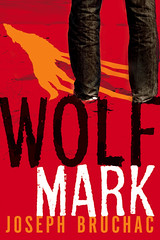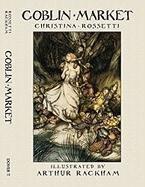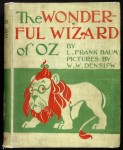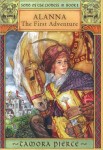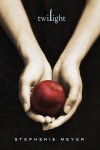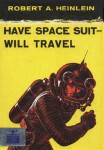Reader reactions are so subjective. One person might think there’s not nearly enough worldbuilding in a book (“give me more! MORE!”) and another might say of the exact same book that what worldbuilding there is was way too confusing (“I couldn’t keep all those made-up words straight!”).
So how do you, as the author, balance the needs of such a wide range of readers when you’re working in a complex world that needs development? And how do you balance the need to establish your characters, setting, and plot with the need to spool out information to your reader to intrigue them rather than confuse them?
This is a question that pretty much every author and editor of speculative fiction struggles with, particularly because we, as veterans of the genre, are already more comfortable with a lot of worldbuilding jargon than your average teen reader, particularly teen readers whose preference for fantasy runs more toward the contemporary paranormal variety. There are a number of reasons why I think Twilight was so popular on such a broad scale, but one of the biggest ones was the relatability of the situation. So what if you’ve never had a vampire show up at your high school? It could happen!
Think about all the really big fantasy hits of the last few years in children’s and YA fiction: Harry Potter, Percy Jackson, Twilight, Hunger Games. Of these books’ beginnings, only The Hunger Games is all far that outside the everyday experiences of your average young reader, and even The Hunger Games starts with a relatable situation—a coal mining family lives in a desperate situation and must hunt for food; while most kids who would have access to The Hunger Games don’t live under a despotic regime, it’s plausible that it could happen in the real world. Harry Potter and Percy Jackson are ordinary kids going to school, living somewhat normal lives (even if abusive ones, in the case of Harry) before their worlds change with the discovery of magic. Their starting point is relatable.
What this means is that readers of Harry Potter, Percy Jackson, and Twilight figure out the world alongside the main character. Information is spooled out as the character needs it, so the reader doesn’t have to absorb everything at once. This is a low bar for entry, not requiring much synthesis of information.
What about Hunger Games? Now it gets a little tougher. Suzanne Collins starts out with a perfectly relatable (if a tiny bit cliche) situation, the main character waking up and seeing her family. We get some exposition on Katniss’s family and the cat who hates her. But it becomes non-cliche by page 2, when we learn about the Reaping. Ah! What’s the Reaping, you ask? We don’t know yet. Now the bar for entry is raised. There is a question, the answer for which you’re going to have to read further to find out. The infodumpage level is low, but there is still some exposition in the next few pages, letting us know that Katniss lives in a place called District 12, nicknamed the Seam, and that her town in enclosed by a fence that is sometimes electrified—and which is supposed to be electrified all the time.
Collins’s approach to spooling out a little information at a time is to explain each new term as she goes, but some readers think that feels unnatural in a first person voice because the narrator would already know these things, so why is she explaining them to the reader? It depends on the story, in my opinion—Collins makes it work because of how she crafted Katniss’s voice. It is a very fine line to walk—I can’t tell you how many submissions I’ve gotten that start out with, “My name is X. I am Y years old. I live in a world that does Z,” an obvious example of how this approach becomes downright clumsy when not handled with Collins-esque finesse.
Then there is the opposite end of the spectrum, in which the reader is given clues to work out rather than having any new terms explained to them. This approach needs just as much, if not more, finesse. It’s a process that some readers who are new to speculative fiction might stumble over the most, which is why I think there’s so little of it in middle grade and YA fantasy and science fiction. I’ve seen it called “incluing,” which is a silly word, but I don’t know of another name for it and the description of incluing in that Wikipedia link is exactly the kind of worldbuilding I prefer to see in the beginning of a book, particularly one set in a world that has no connection to our own, or if it’s in the future of our world it’s far enough into the future that the society is probably unrecognizable to us, such as the society in Tankborn.
The prominent example I like to give writers for this kind of worldbuilding is from The Golden Compass. Check out the first page of that book:
(I hope that embed worked right! It’s easier just to show you the first page from Google Books than to type up the first few paragraphs myself.)
Pullman jumps right into the scene, with Lyra sneaking down the hallway with her daemon. We don’t even know what the daemon physically looks like until paragraph 4, and even then we don’t know why he’s called a daemon or what makes a daemon special. In fact, this is one of the major conflicts of the book—we need to read more to find out about daemons, and further mysteries are revealed as we read that deepen our understanding of daemons. As we discover more clues that intrigue us, we want to know more, and keep reading.
But the line between intriguing the reader and confusing the reader is very thin, and I would argue that for some readers it’s in a different place than for others. Those of us who are familiar with fantasy might be more willing to patiently wait for more information about daemons because we trust that this author will let us know what we need to know when the time is right. We know that they’re teasing us with this information so as not to overburden us within the first few pages of the book (or, in the case of The Golden Compass, because the reader can’t know what the majority of people in that world don’t know, either).
In situations in which you need to establish a world that’s entirely different from our own, I find that putting a character in a situation that’s somewhat familiar to the reader can help with establishing the unfamiliar. In Karen Sandler’s Tankborn, for example, Kayla has to watch her little brother instead of going to a street fair with her friends. While Kayla might call him her “nurture brother” instead of just her “brother,” it’s still a situation to which a lot of readers can relate, even if it is set on another planet and her brother is catching nasty arachnid-based sewer toads instead of familiar Earth frogs and toads.
For me it’s also the difference between showing and telling. Philip Pullman shows us how his world works, rather than pausing to tell us how it works (“in this world, all people are born with an animal companion called a daemon”). Telling can work, though, especially in small doses—Katniss’s voice is so conversational that the brief moments of telling in the first few pages of The Hunger Games work, particularly because Collins is mostly showing what Katniss is up to. The brief pauses to “infodump” feel like the reader is being told a story by a storyteller, like a friend telling a story over the kitchen table after a nice big meal would pause and explain something you didn’t understand (a friend who’s a very good storyteller). It’s an awareness of audience, in a way, that most speculative fiction doesn’t have the luxury of.
Showing isn’t always better, and telling isn’t always bad, when done right and mixed in with showing. Whichever method you use, remember that sometimes readers will trip over new words so you need to give them as much context as possible without over-infodumping. And here is where the art comes in. I can’t tell you what that balance is, but if you look at examples like the ones above, you’ll get a better feel for how much to reveal and how much to hold back in your first few pages—revealing enough to orient your reader and give them a sense of the differences of this world (while grounding them in something familiar like Lyra’s hallway or Katniss’s humble home) while seeking to avoid overburdening them with too much all at once.
The line for each reader will still be different—heaven knows that I’ve seen reviews criticizing the first few pages of the same book that another reviewer found not-meaty-enough—but you’ll come to find the right balance for your story.
What about you? How have you found the right balance of worldbuilding without overburdening the reader? What books do you recommend as examples of good worldbuilding in the first few pages?
 I’m currently splitting my time between two favorite authors’ newest books: James Dashner’s The Death Cure and Tamora Pierce’s Mastiff. I’m a HUGE Tamora Pierce fan. As she often says when she introduces herself at conventions, she writes about girls who kick butt. You can see a really interesting progression of feminist thought from second wave to third wave in her work, too—the Song of the Lioness quartet about Alanna, published in the 1980s, are very much “girls are ‘as good as’ boys,” with something to prove, and then you can see how the idea of “girl power” has changed over the years all the way down to today, in the Beka Cooper books, in which Beka has nothing to prove: she is who she is, because duh, she kicks butt because she can and should be able to defend herself and those who have no power or voice. (She’s a medieval cop who can talk to ghosts and Hunts with a scent hound. I love it!) The Beka Cooper books are really interesting to me because they’re actually set at a time in the history of Tortall before Alanna, and you can see how the beginnings of the belief in the Goddess as the Gentle Mother influences Alanna’s circumstances later when she’s in such a sexist situation that no one believes women should be lady knights, despite there being many storied lady knights in the past.
I’m currently splitting my time between two favorite authors’ newest books: James Dashner’s The Death Cure and Tamora Pierce’s Mastiff. I’m a HUGE Tamora Pierce fan. As she often says when she introduces herself at conventions, she writes about girls who kick butt. You can see a really interesting progression of feminist thought from second wave to third wave in her work, too—the Song of the Lioness quartet about Alanna, published in the 1980s, are very much “girls are ‘as good as’ boys,” with something to prove, and then you can see how the idea of “girl power” has changed over the years all the way down to today, in the Beka Cooper books, in which Beka has nothing to prove: she is who she is, because duh, she kicks butt because she can and should be able to defend herself and those who have no power or voice. (She’s a medieval cop who can talk to ghosts and Hunts with a scent hound. I love it!) The Beka Cooper books are really interesting to me because they’re actually set at a time in the history of Tortall before Alanna, and you can see how the beginnings of the belief in the Goddess as the Gentle Mother influences Alanna’s circumstances later when she’s in such a sexist situation that no one believes women should be lady knights, despite there being many storied lady knights in the past.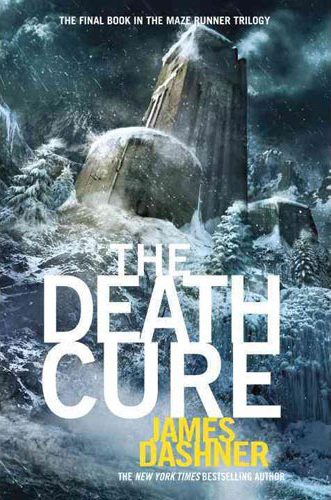 And of course The Death Cure is the last in James Dashner’s Maze Runner trilogy. Even though I worked with James on the first book years ago before it ended up selling to Delacourte (curses! But I’m glad it found a good home), I could never have predicted where the next two books would end up. It’s good, guys. I’m not quite finished reading yet, but it’s action packed and if you haven’t started with The Maze Runner you should catch up to me so we can talk.
And of course The Death Cure is the last in James Dashner’s Maze Runner trilogy. Even though I worked with James on the first book years ago before it ended up selling to Delacourte (curses! But I’m glad it found a good home), I could never have predicted where the next two books would end up. It’s good, guys. I’m not quite finished reading yet, but it’s action packed and if you haven’t started with The Maze Runner you should catch up to me so we can talk.
